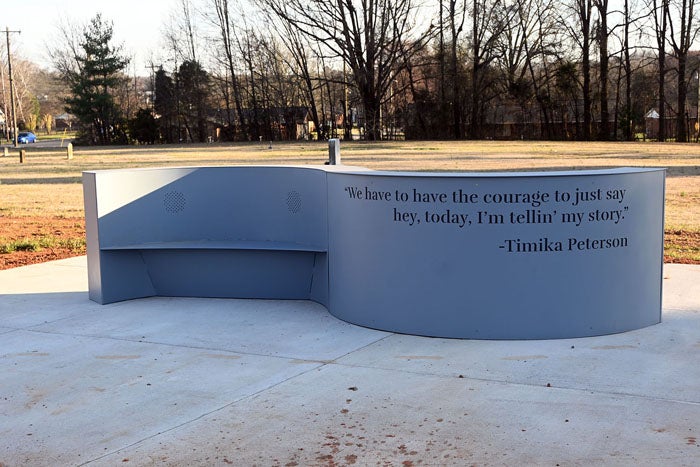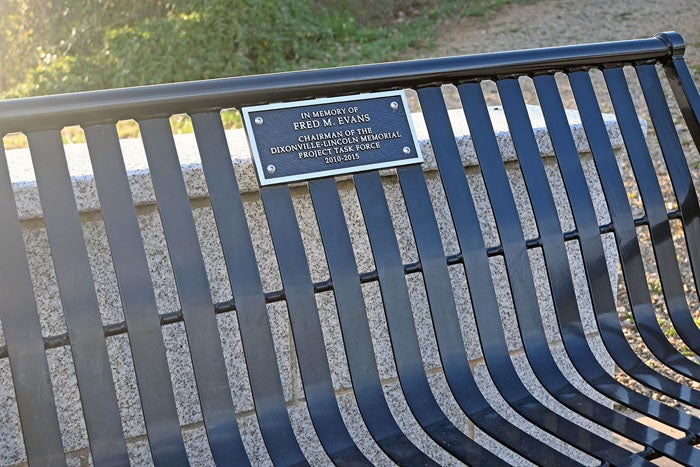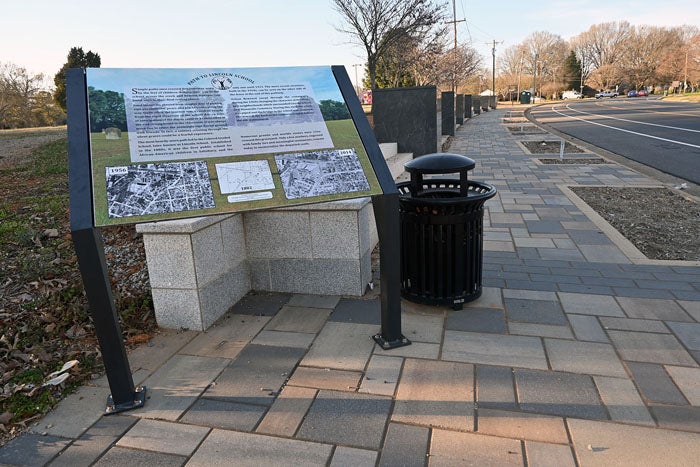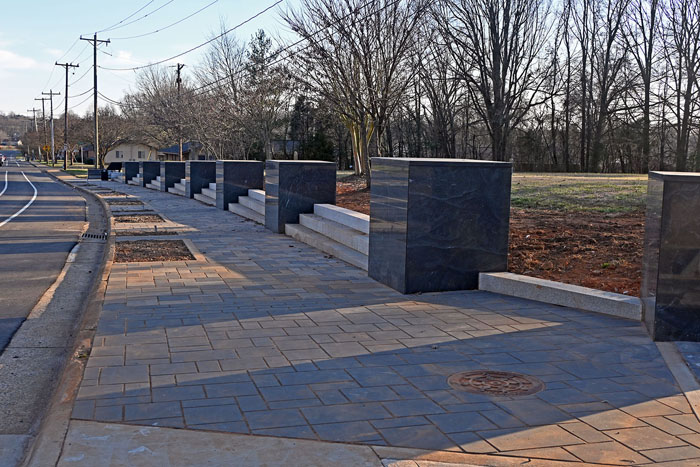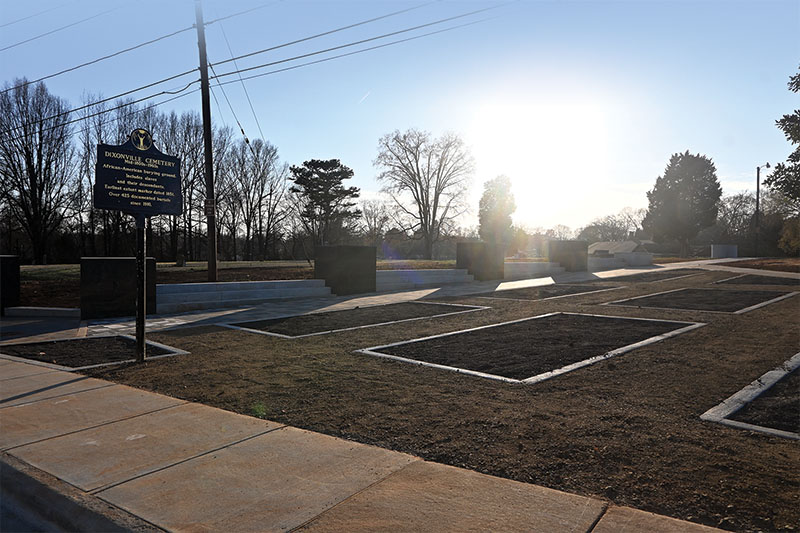Second phase of Dixonville-Lincoln Memorial site nearing completion; task force seeking missed connections
Published 12:10 am Thursday, March 11, 2021
By Natalie Anderson
natalie.anderson@salisburypost.com
SALISBURY — An endeavor to revitalize the Dixonville Cemetery to honor hundreds of African-Americans buried without markers is expected to be completed in this summer.
Since 2010, the Dixonville-Lincoln Memorial Task Force has worked to identify the names and connections of an estimated 500 African-Americans buried at the cemetery for a three-phased project. The Dixonville community was located on the east side of Salisbury, and much of it was impacted by urban renewal in the ’60s.
The site, located at 210 Old Concord Road, represents a centerpiece of a tight-knit neighborhood and a pathway for children attending the historic Lincoln Elementary School, which was the first school opened for African-American students in Salisbury in the late 1800s.
Work on the cemetery project started in 2018. To date, repairs have been made to existing grave markers. Additionally, a history sign, a foot path, an interpretative walk and a seating area has been built.
The first phase of the project included a foot path memorial walk. The second phase created an interpretive walk that connects to the memorial walk with stops along the path where visitors are welcome to gather, study and reflect on the history of the cemetery and the Dixonville neighborhood.
Emily Perry, the task force chair and former resident of the neighborhood, said reaching this stage of the process is “indescribable.” It’s a bittersweet feeling, she said, as “quite a few people who supported this project have passed on.”
“Just to know they put their heart and soul into this … it’s a bittersweet feeling,” Perry said.
A seating area at the cemetery is designated to the memory of Fred M. Evans, a former Dixonville resident and Memorial Task Force chair. Others originally involved with the memorial project who have since passed include the late William C. Peoples, Floyd A. Kerr III and Eleanor Qadirah.
And though not part of the original plan, a $50,000 grant from the Z. Smith Reynolds Foundation allowed Rowan-Cabarrus Community College to install a “Here’s My Story” seating area that includes a bench with quotes from local resident and Salisbury Pride board member Jamie Wilkerson and Kiddieland Kindergarten teacher and administrator Timika Peterson.
The second phase, which includes the interpretive walk, is nearly done, except for engravings and landscaping. At an Aug. 4 Salisbury City Council meeting, council members adopted a budget ordinance to allocate $200,000 from the 2020-21 fiscal year fund balance for the second phase. But the city is still seeking $15,000 in donations to complete the remaining pieces, said Alyssa Nelson, the city’s urban design planner.
Both Nelson and Perry appreciate the nearly $486,000 that has been received from an active GoFundMe, which can be accessed at gofundme.com/f/dixonvillelincoln-memorial. Some recent donations come from St. Luke’s Episcopal Church, Salisbury-Rowan Community Foundation, Blanche and Julian Robertson Family Foundation and private donations in memory of Betty Dan Spencer. Perry said a grant from the Rowan Arts Council will cover the cost of engravings at the site. Stalite Lightweight Aggregate has donated soil and materials for landscaping.
“We thank all those in Salisbury and beyond who have donated and supported the memorial project,” Nelson said. “The task force is anxious to finish the project and welcome the community to visit.”
Nelson added the completion will depend on when the remaining funds are raised, which is expected by the spring or early summer. An online fundraising event is proposed for March 19.
Prominent African-American residents of Salisbury are buried at the cemetery, including Bishop John Jamison Moore, who founded the AME Zion Church in western North Carolina, and the Rev. Harry Cowan, a minister who was born into slavery but went on to establish 49 churches and baptize 8,500 people. The earliest known burial honors Mary Valentine, who died in 1851.
Perry said members believe there are still many more African-Americans who have not yet been identified. Thus, they are asking the community to inform them of any missing connections and any others who may have been buried at the Dixonville Cemetery. She asks the public reach out with information at 704-645-8710, 980-234-9142 or via the Dixonville-Lincoln Memorial Task Force Facebook page. A list of identified persons interred at the cemetery can be view by visiting: Dixonvillememorial.com/interredlist.
The third phase of the project involves revitalization of Lincoln Elementary School, the “focal point” of the community. The revitalization plan will transform the long-vacant historic school into a useful space as well as reconstruct the footbridge used by children to get to the school.
Perry said the school is currently owned by Mt. Calvary Holy Church and that task force members are working to keep the property.
“The school meant a lot to people who were in that neighborhood,” Perry said. “People really took care of us. The school was the foundation of it all.”
Perry said the project should show locals that “good things can happen when we come together.”
More information about the project can be accessed at www.dixonvillememorial.com.


